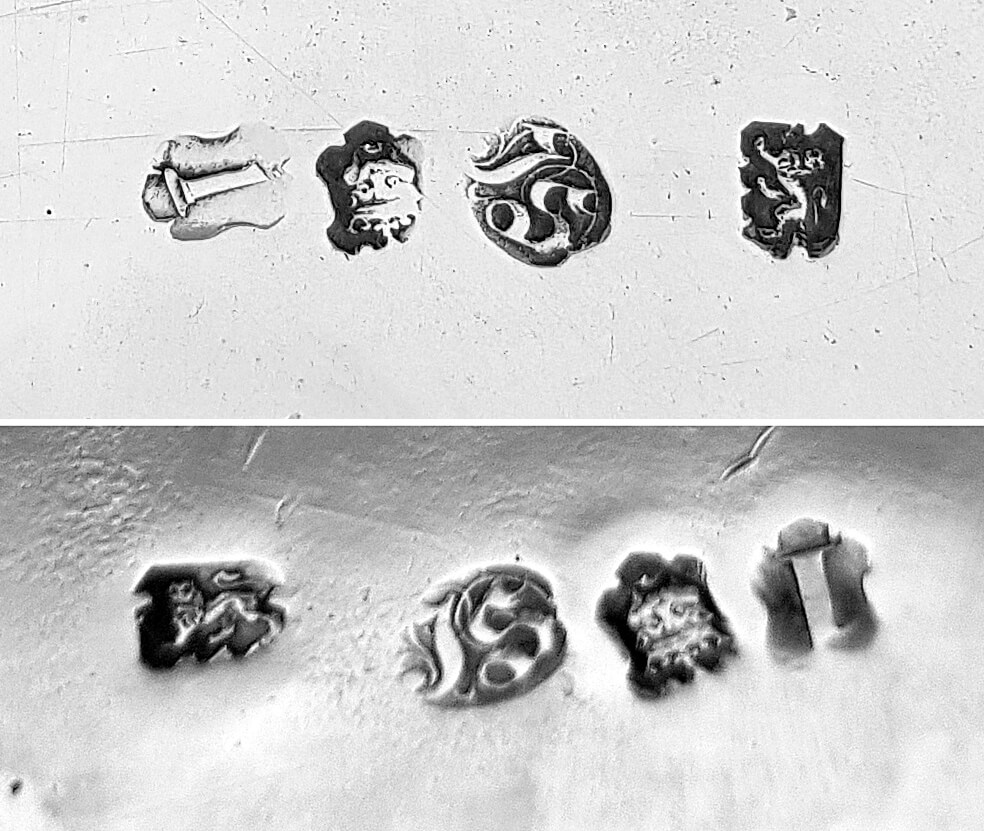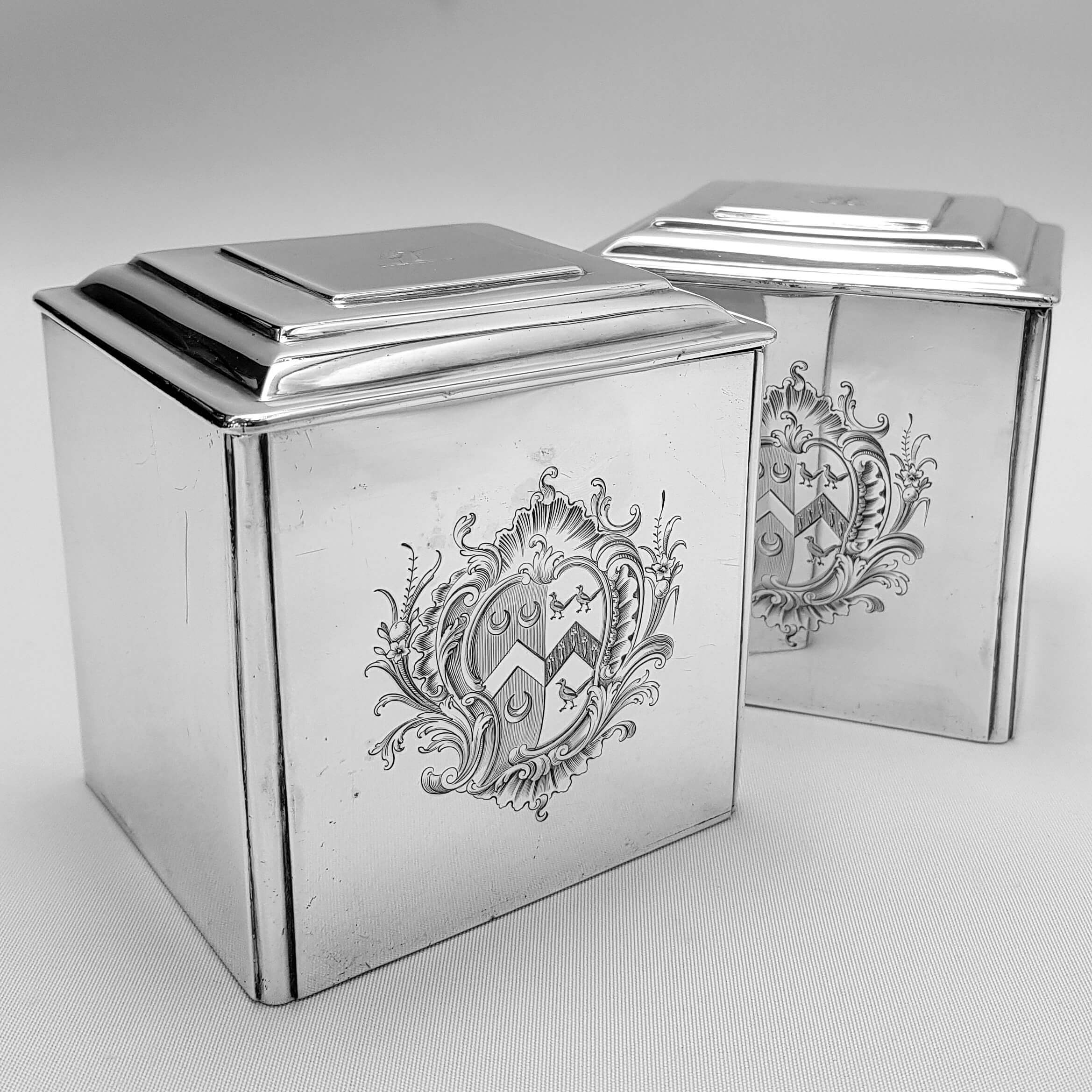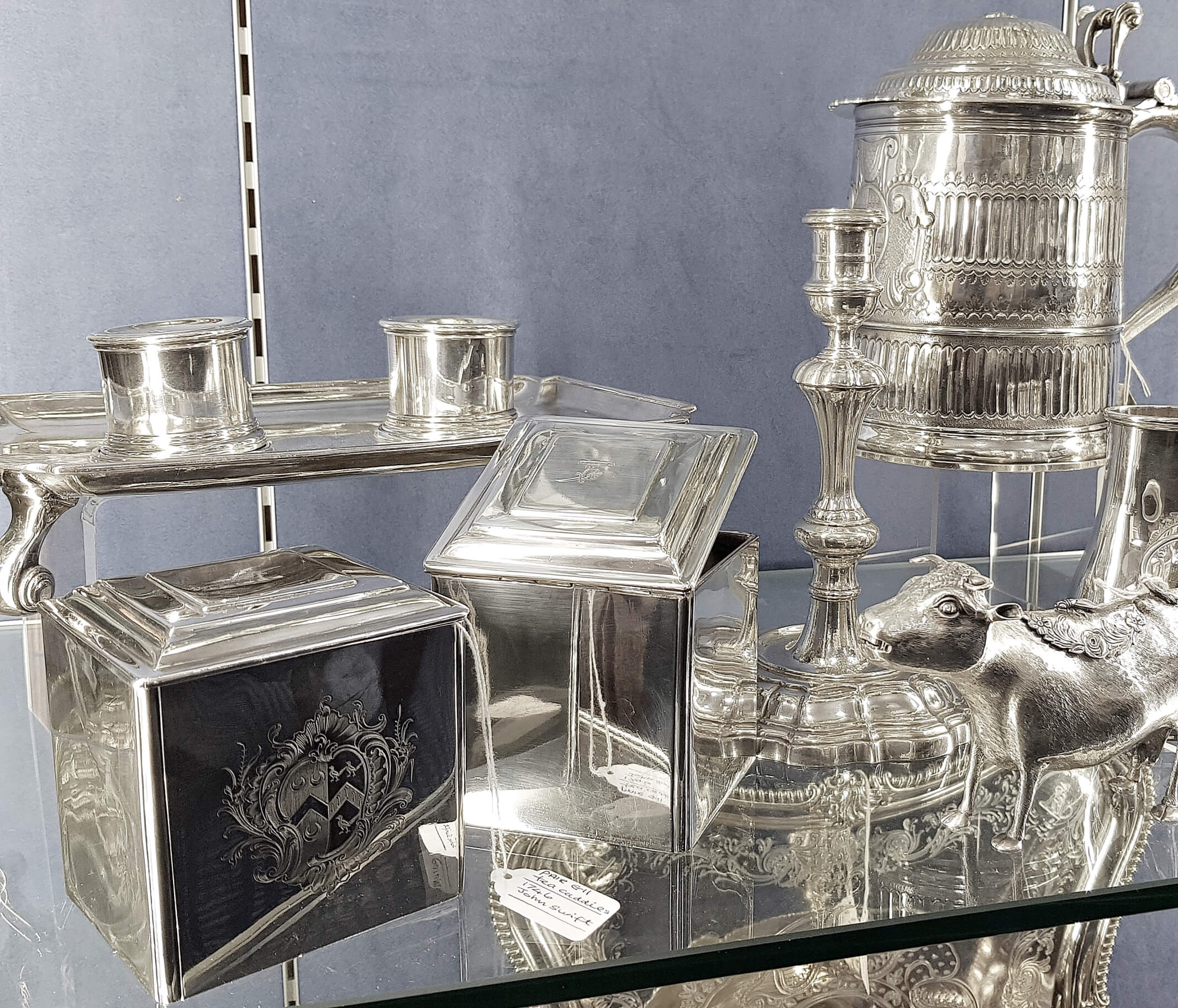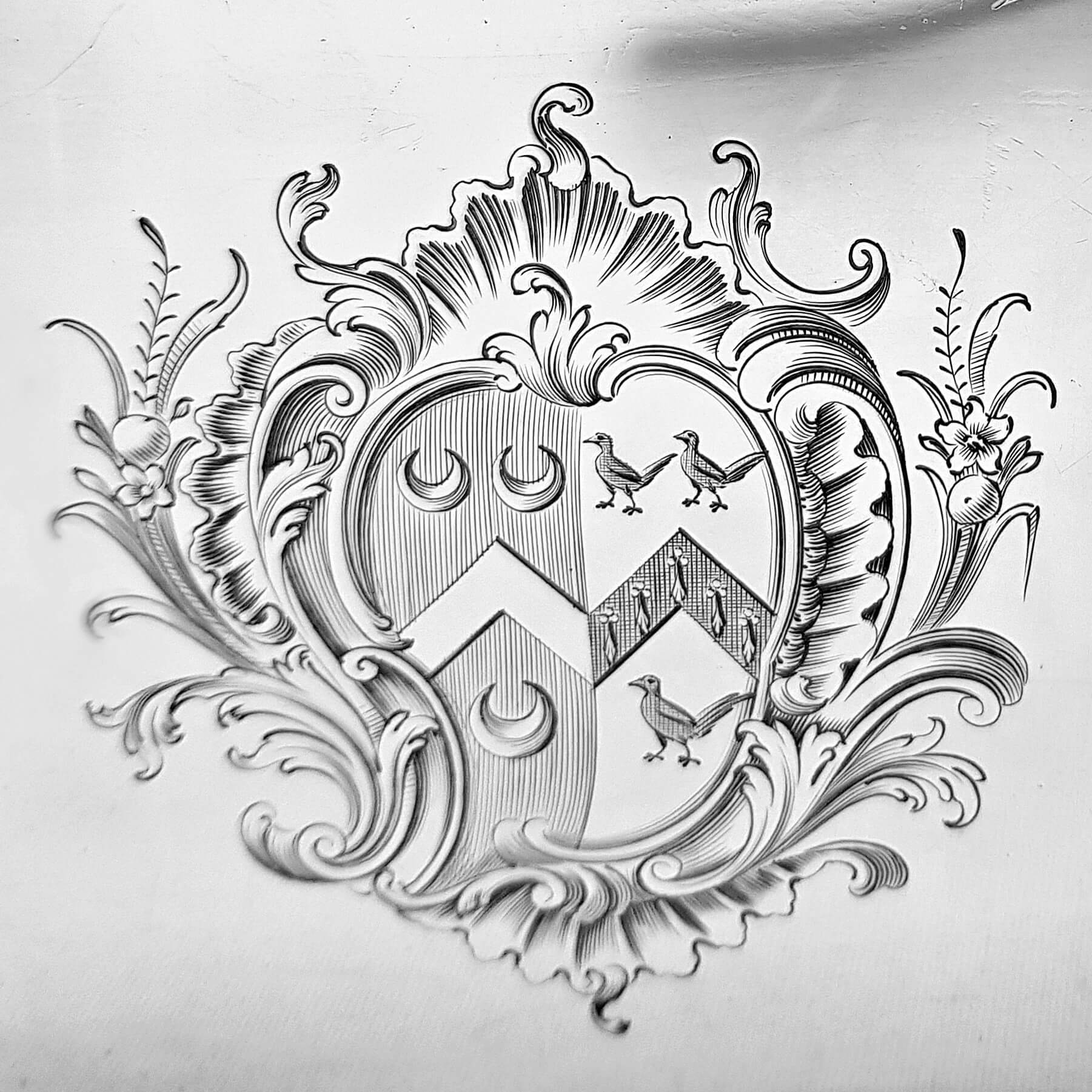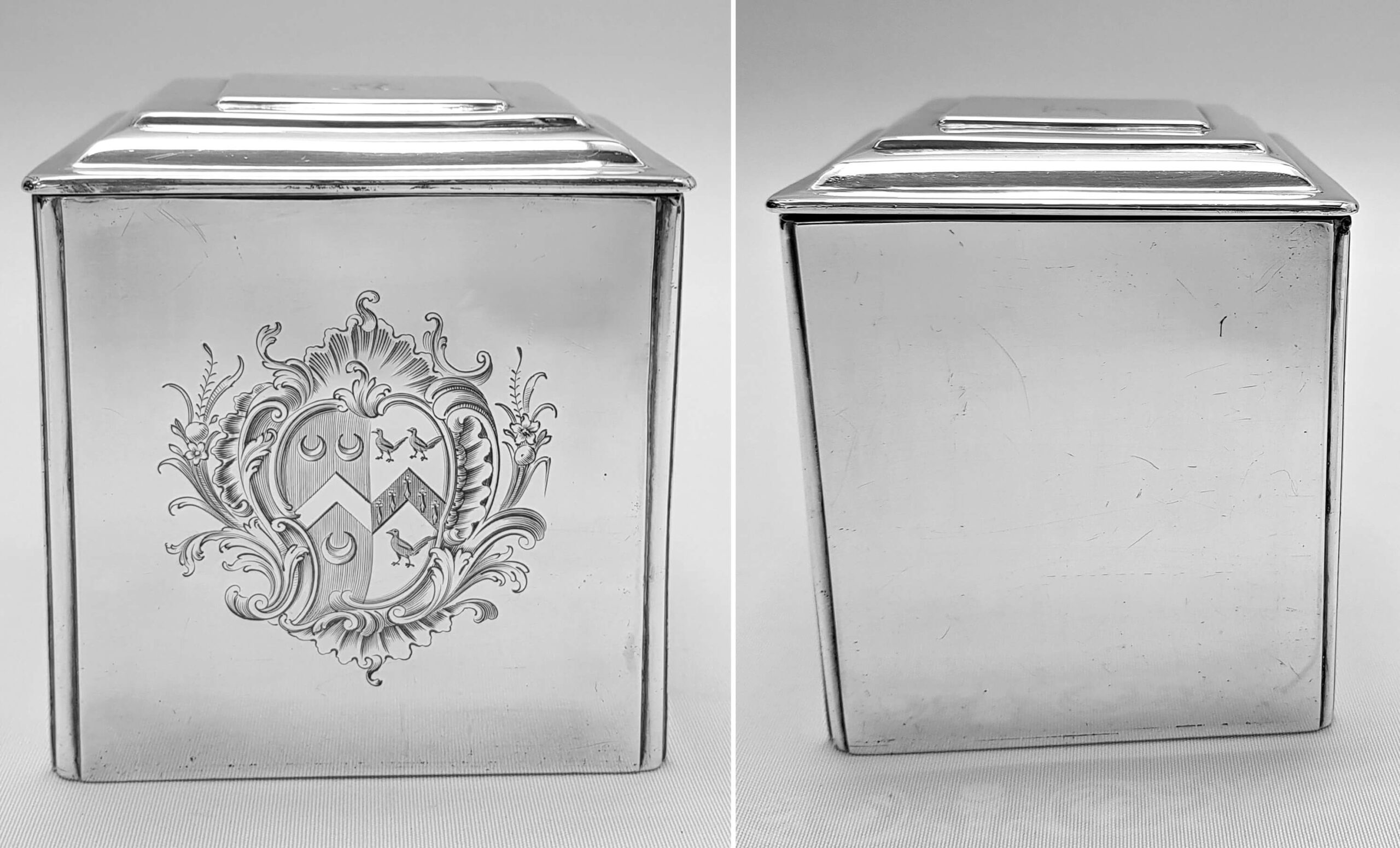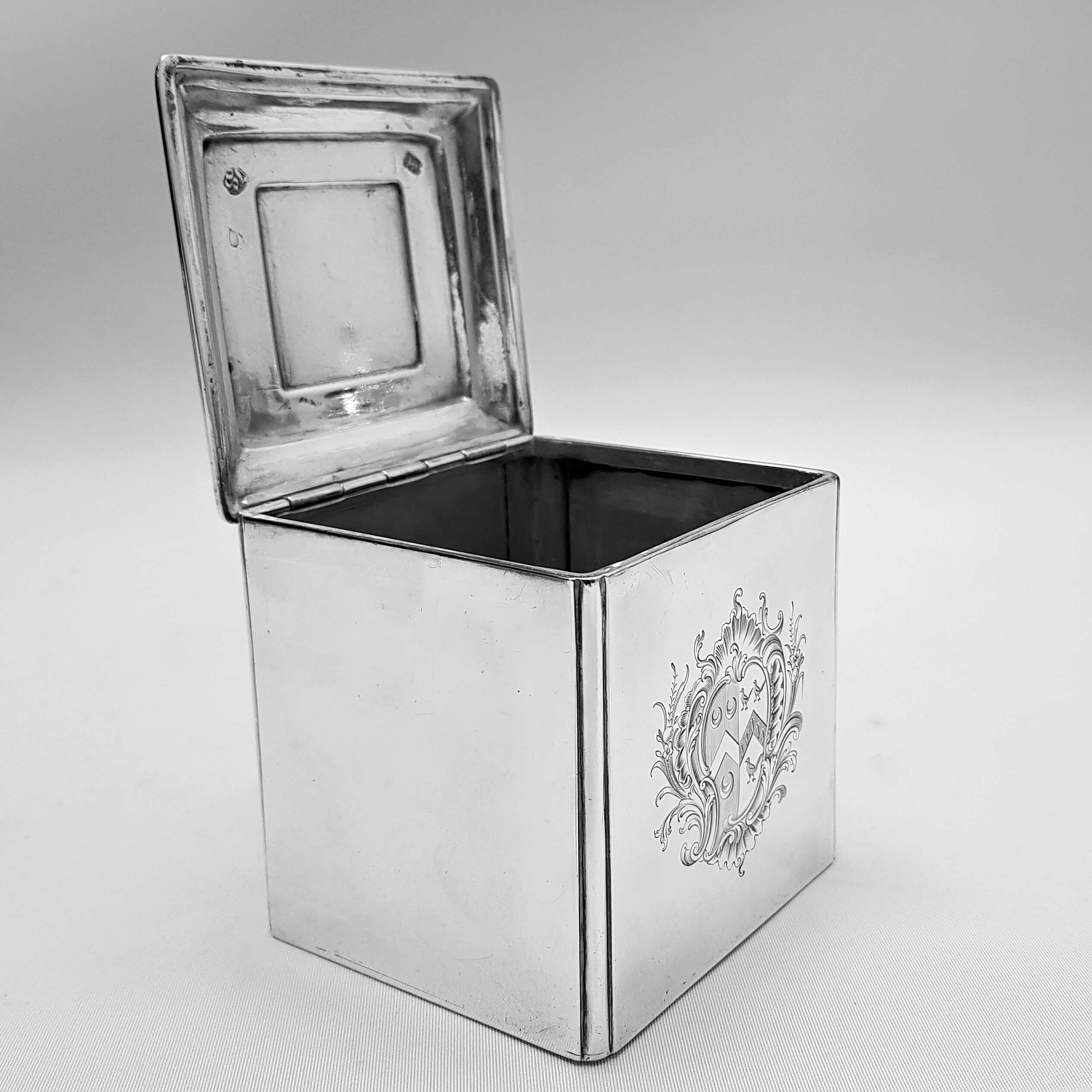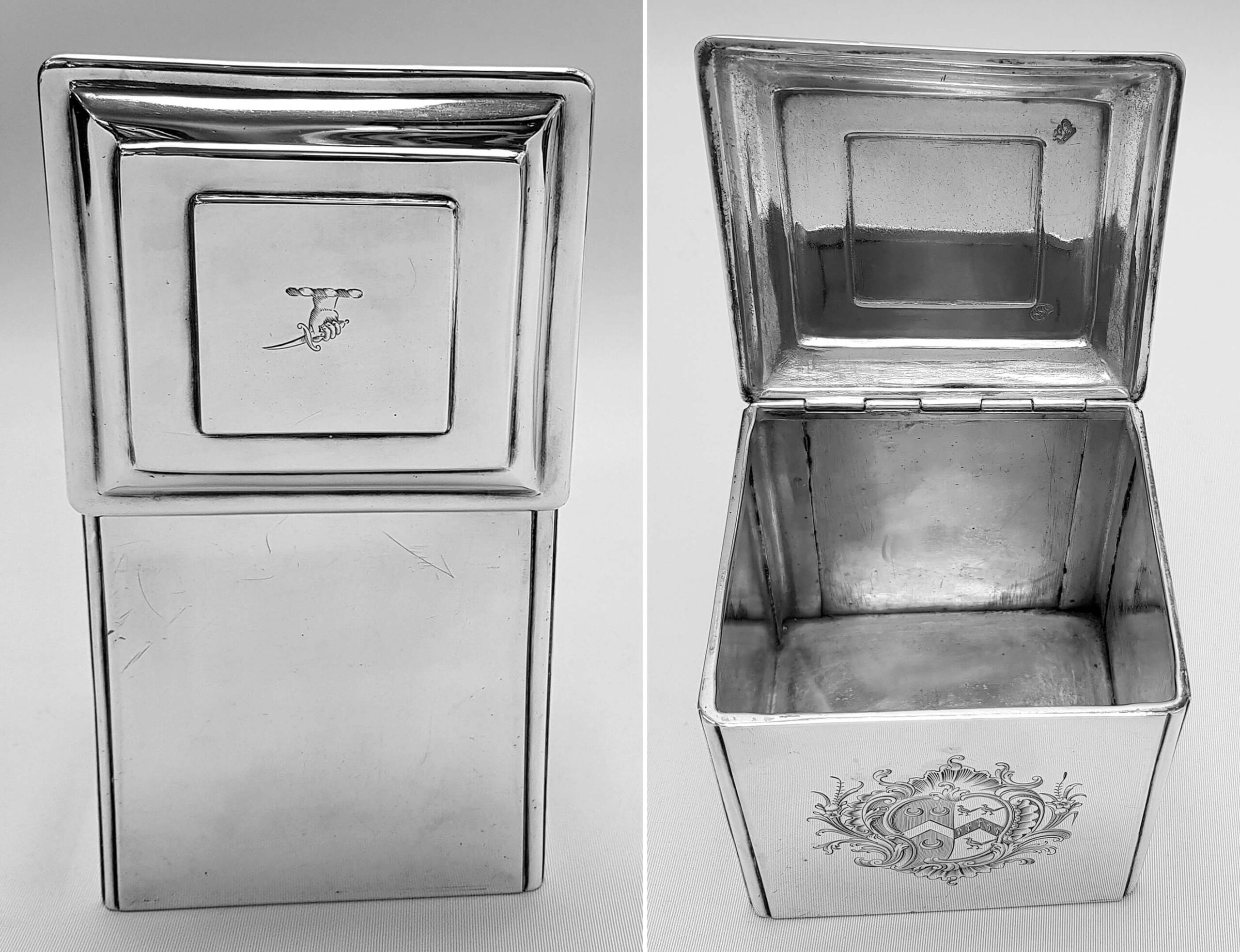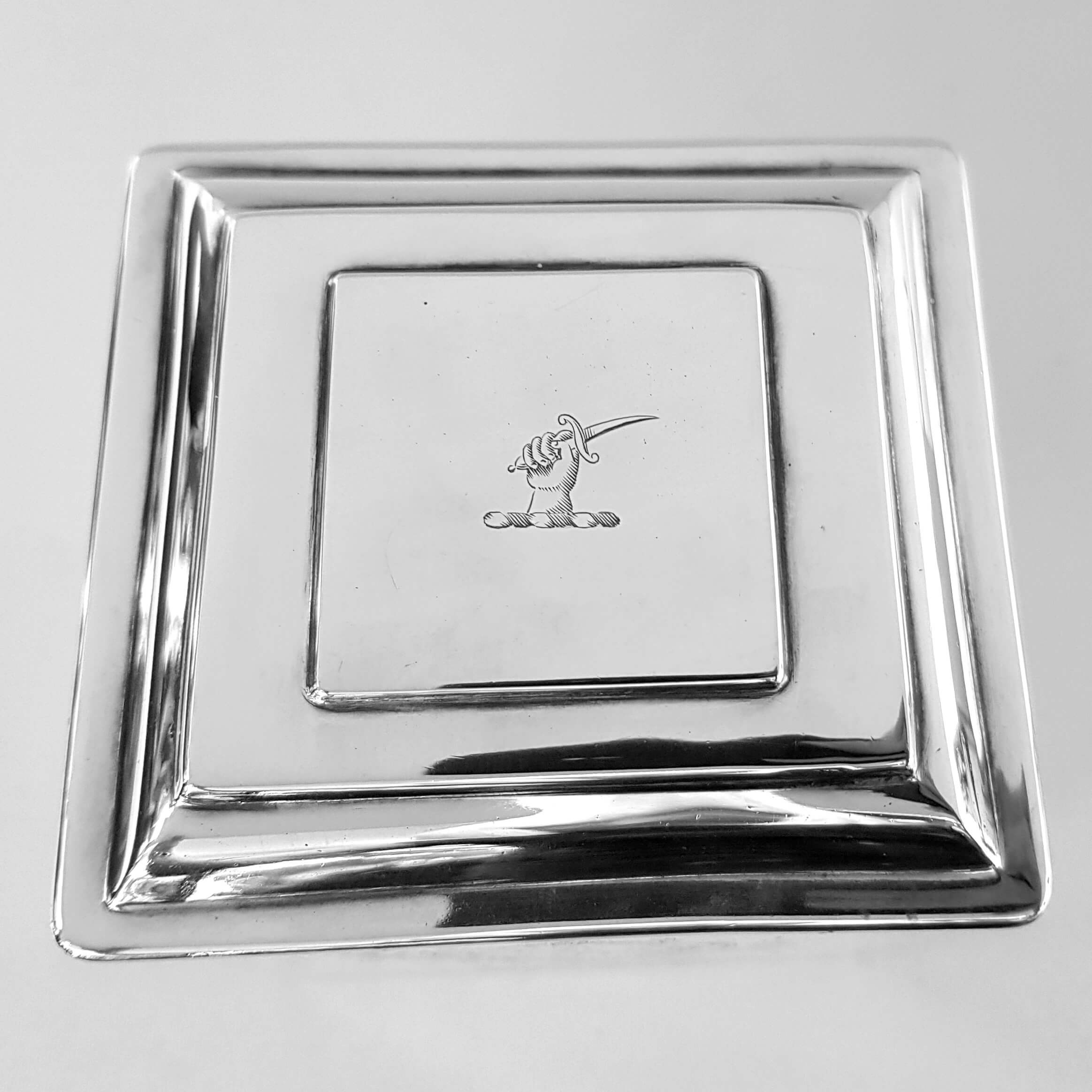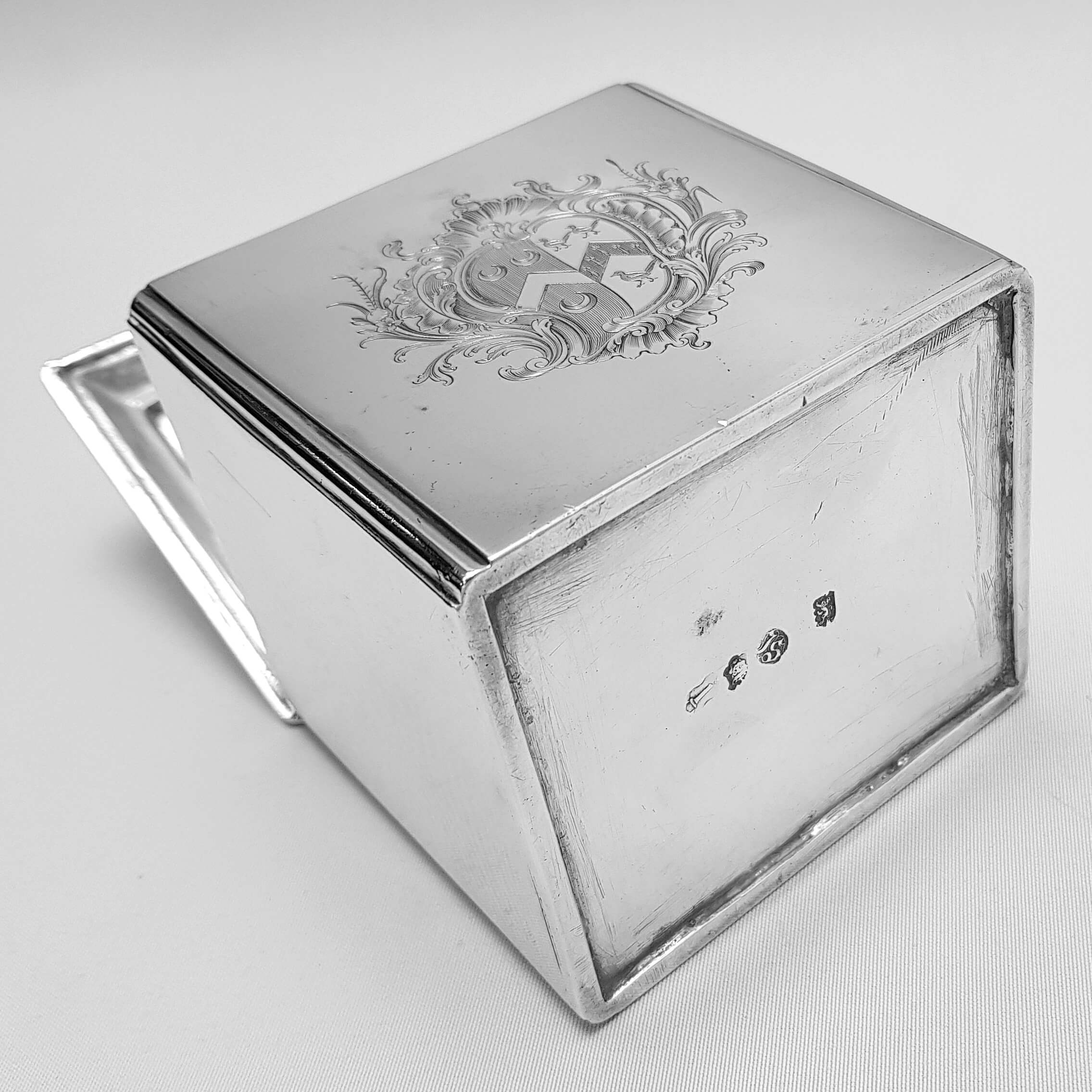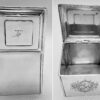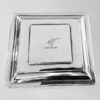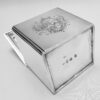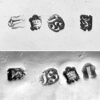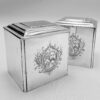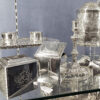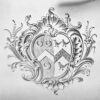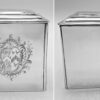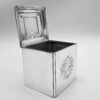George II Pair of Antique Silver Tea Caddies
SOLD
Stock: 10388
Date: 1746
Maker: John Swift
Country: England
An exceptional pair of rectangular silver tea cannisters with stepped hinged lids and canted corners. The plain form, almost cubic,...
Description
Condition
The tea boxes are in very good condition with crisp engravings. Minor wear consistent with age.
Maker Information
Maker: John Swift
John Swift, London silversmith, apprenticed to Thomas Langford 1718, turned over to William Paradise 1719, and again to Thomas Serle 1723. Free 1725. 1st mark enetered as smallworker 1728. 2nd mark as largeworker1739. 3rd mark small size 1757. 4th 1757. Livery 1758. His son John was apprenticed to him 1750. Swift's work was mainly hollowware, tankards, coffee pots and teapots, often with rococo and chinoiserie motifs.
Our Guarantee
Customer satisfaction is our primary concern
All silverware on our website is checked thoroughly prior to offering it for sale and every product listing contains a condition report and details of the silver hallmarks.
All items offered on our website include:
- Free Shipping Worldwide
- Tracked and Insured
- 14 day no quibble money back guarantee
- We are accredited members of LAPADA and conform to their strict professional standards
- We dispatch 1-3 days after receiving cleared payments
More detailed information about deliveries, returns and how to pay is available in the Help section at the bottom of this page.
